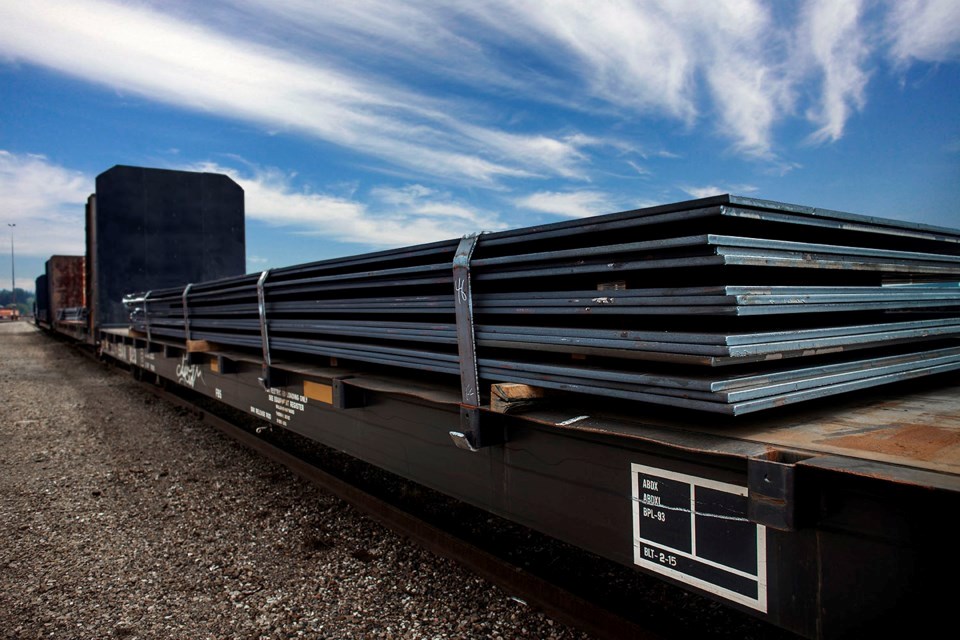Algoma Steel CEO Michael Garcia described the Sault Ste. Marie steelmaker’s quarterly performance as “not up to standards”
The plate and sheet steel manufacturer had to deal with a number of operating issues that’s impacted its 2023 second-quarter financials.
There were commissioning problems and delays in finishing the first phase of modernizing its plate mill.
There was an outbreak of COVID at the Direct Strip Production Complex (DSPC) that caused some staffing issues that impacted production there.
And there was an August fire with one of its two conveyors feeding its coke oven batteries that increased costs and ultimately the bottomline. Algoma had to purchase coke from other companies.
These all were factors in Algoma shipping fewer ton of steel – 435,000 tons – to customers, compared to the 587,340 tons that went out the door during the same quarter last year.
Garcia said the steelmaker is tackling these challenges head on and putting them in the rear-view mirror.
“We are taking actions to get our operations on stronger footing and improve performance,” messaged Garcia in a Nov. 8 webcall to analysts.
All things considered, Algoma posted a tidy profit of $82.7 million for its second quarter of 2023. It was way down from $301 million recorded in this year’s first quarter and down from $288 million recorded during the same period of 2021.Consolidated revenue came in at $599.2 million, down from $1.01 billion generated during the second quarter of last year.
But it’s the cost of doing business this year.
Algoma is experiencing the lull in North American steel prices, which have been a steady decline since last March, said Garcia.
The company and its customers in the automotive, construction, oil and gas sectors are facing down inflation, high interest rates, ongoing supply chain issues, and the fear of a looming recession.
But Garcia said the order book looks consistent and the forecast indicate the the price for steel coils – one of Algoma’s bread and butter products - is expected to modestly increase from now until next summer.
Algoma’s biggest drag has been finishing the first phase of the modernization of its legacy plate mill, now scheduled to be done by early 2023. The mill is currently running at 80 per cent capacity. The capital costs of this upgrade has also jumped from $120 million to $135 million, reflective of the commissioning problems and inflationary pressures.
Garcia said all the mechanical work in the plate mill is finished with the remaining work being on the automation side to outfit it with modern next-generation process controls.
The second phase of the mill upgrade is slated to start in the middle of next year. But Garcia said they’ll be mindful of market conditions and “other operational factors” before making a final decision to press on with the next phase.
Working in Algoma’s favour is that its $703-million electric arc furnace (EAF) project construction project remains on budget and on schedule for a 2024 mid-year startup. Garcia cautioned supply chain issues will need to be closely managed for a project of this size.
When online, the EAF complex will be a historic gamechanger for Algoma in boosting annual liquid steel production capacity to 3.7 million tons while cutting carbon dioxide emissions by 70 per cent.
About $162.5 million has been spent on the project by the end of September with 60 per cent of the spending expected to take place in this 2023 fiscal year.
Foundation work for the EAF is well past the halfway mark, with the building pilings 88 per cent complete and the concrete foundations 75 per cent done.
To feed the future power requirements of the new furnaces, a high voltage, 230- kilovolt powerline, 11 kilometres long, is being strung from one end of the city to the other. The local utility and Hydro One are handling that piece.
While important, Garcia said, it’s not necessarily a critical issue since there’s enough existing power supply within Sault Ste. Marie to run the steel mill’s furnaces along with accommodating any growth within the community. If the power upgrading project is not completed on time, it may require Algoma to generate more of its own power. That’s why the company is upgrading that self-generating capacity with the arrival of new General Electric gas turbines, currently being installed.




